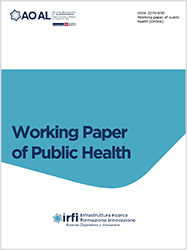Aderenza alle terapie in pazienti con stenosi carotidea prima/dopo l’arruolamento nello studio CARUSO
All claims expressed in this article are solely those of the authors and do not necessarily represent those of their affiliated organizations, or those of the publisher, the editors and the reviewers. Any product that may be evaluated in this article or claim that may be made by its manufacturer is not guaranteed or endorsed by the publisher.
Autori
Background: questo lavoro analizza l'aderenza alla terapia medica dei pazienti arruolati in uno studio clinico. L'end-point primario di questo studio è stato quello di valutare se l'arruolamento in uno studio clinico può migliorare l'aderenza alla terapia antiaggregante piastrinica e/o lipidica.
Materiali e Metodi: sono stati considerati i primi 92 pazienti asintomatici con stenosi carotidea ≥50% arruolati nello studio CARUSO. La compliance complessiva al basale al trattamento antiaggregante è stata stratificata in pazienti con buona, media e scarsa aderenza. Risultati: la compliance complessiva alla terapia antiaggregante è risultata buona per 66 pazienti (95,7%) su 69 già in trattamento. È stata riscontrata una correlazione significativa tra la buona aderenza alla terapia farmacologica e la presenza di precedenti eventi cardiovascolari al momento dell'arruolamento: 92,3% (un evento), 84,6% (due eventi), 50% (tre eventi) vs 35,1% di quelli senza eventi (p<0.001). Dopo 6 mesi è stata riscontrata una buona aderenza estesa anche ai pazienti che non avevano avuto eventi precedenti (p=0.083).
Conclusioni: questa ricerca ha evidenziato una tendenza positiva nel miglioramento dell'aderenza alla terapia lipidica (88,3% vs 56,7%, p=0.002) e il mantenimento di un livello elevato (>95%) di aderenza alla terapia antiaggregante, dopo l'arruolamento in uno studio clinico.
Come citare

Questo volume è pubblicato con la licenza Creative Commons Attribuzione - Non commerciale 4.0 Internazionale.






